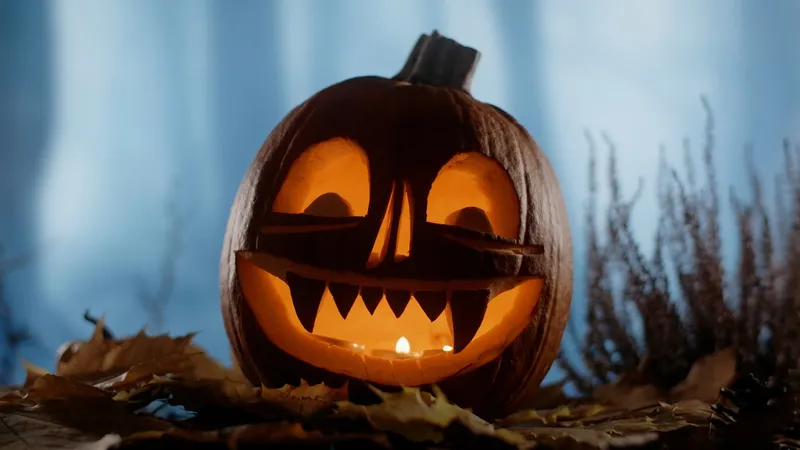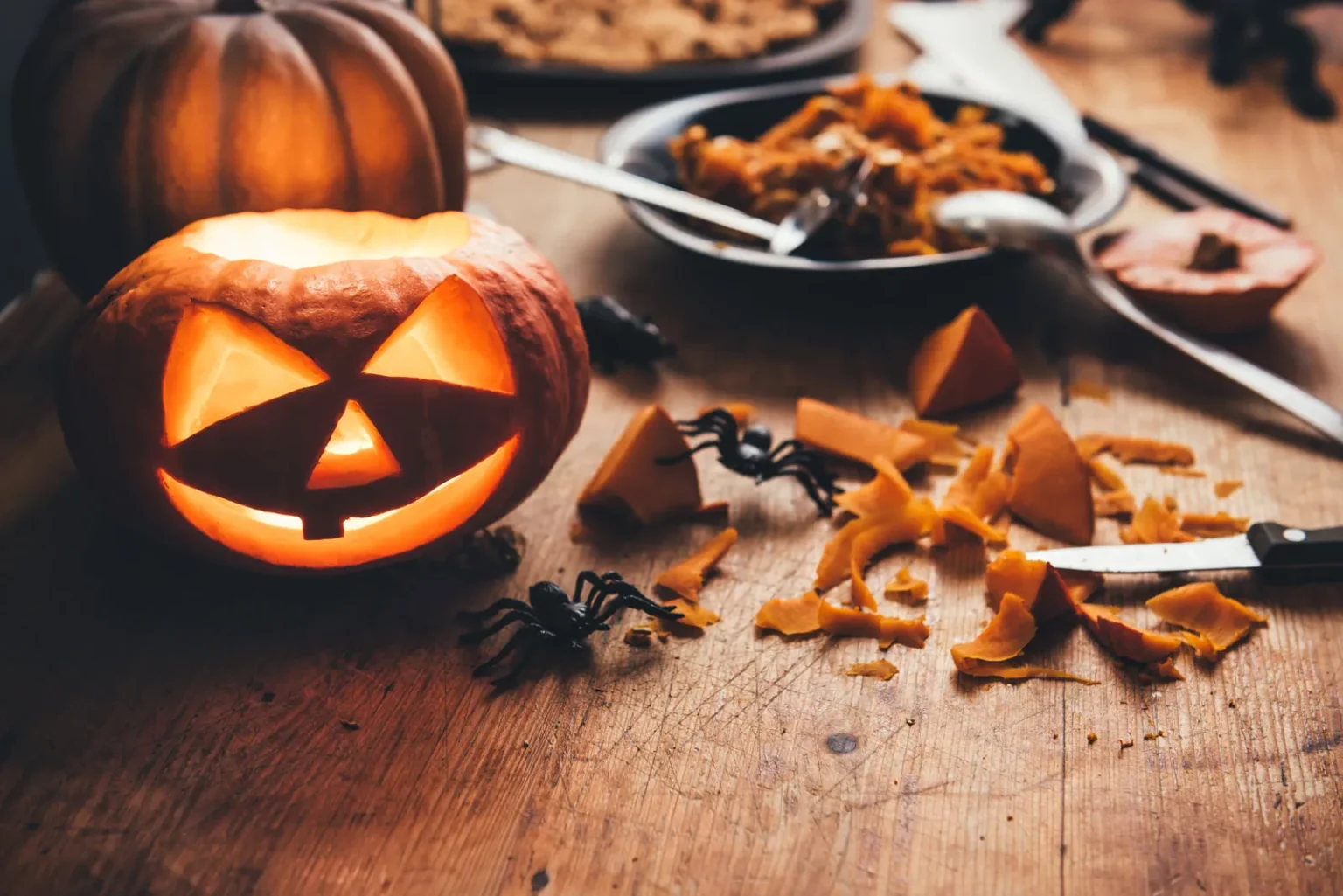Halloween is one of the most exciting and visually spectacular celebrations of the year. From spooky costumes and eerie decorations to candy-filled adventures, one symbol stands out among all—the pumpkin. Every October, we carve, light, and decorate pumpkins, turning them into glowing faces that illuminate our doorsteps. But why do we celebrate Halloween with pumpkins? What makes this orange fruit (yes, it’s a fruit!) the heart of Halloween traditions?
The answer is a beautiful mix of ancient folklore, harvest symbolism, and creative evolution that spans centuries. Let’s journey through the fascinating history and meaning behind this beloved Halloween ritual.
The Origins of Halloween and the Pumpkin Connection
To understand why we celebrate Halloween with pumpkins, we first need to look at where Halloween began. The roots of Halloween trace back to the ancient Celtic festival of Samhain (pronounced “sow-in”). Celebrated over 2,000 years ago in Ireland, Scotland, and parts of Northern Europe, Samhain marked the end of the harvest season and the beginning of winter—a time associated with darkness and death.
The Celts believed that on the night of October 31st, the boundary between the living and the dead blurred. Spirits were thought to roam the earth, and people lit fires and wore costumes to ward them off. Food offerings were left outside homes to please wandering souls and ensure a good harvest for the coming year.
However, pumpkins were not yet part of this celebration. In fact, the original lanterns were carved from turnips or large potatoes in Ireland and Scotland. These eerie, hand-carved vegetables were placed outside homes to frighten away evil spirits—a custom that would later transform into the pumpkin carving we know today.
The Legend of “Stingy Jack” and the Birth of the Jack-o’-Lantern
A central part of understanding why we celebrate Halloween with pumpkins comes from an old Irish folktale about a man known as “Stingy Jack.”
According to legend, Jack was a clever but deceitful man who managed to trick the Devil multiple times. When Jack died, he was denied entry to both Heaven and Hell. The Devil, keeping his word, gave Jack a single burning coal to light his way as he wandered the earth. Jack placed the ember inside a hollowed-out turnip, creating a makeshift lantern.
People began referring to the ghostly figure as “Jack of the Lantern,” and later simply as “Jack-o’-lantern.” To keep evil spirits and “Jack” himself away, the Irish started carving their own lanterns out of root vegetables and placing them near doors and windows.
When Irish immigrants brought this tradition to America in the 19th century, they discovered that the native pumpkin—larger, softer, and easier to carve—was perfect for the job. Thus, the pumpkin replaced the turnip and became the glowing face of Halloween.
The Pumpkin: A Symbol of Autumn and Abundance
Another reason why we celebrate Halloween with pumpkins lies in their seasonal timing and symbolism. Pumpkins ripen in late September and October, aligning perfectly with the harvest season and Halloween celebrations.
In North America, the pumpkin became a symbol of abundance, fertility, and prosperity. It represented the bounty of the earth and the hard work of farmers. As people began celebrating the fall harvest with festivals and feasts, pumpkins naturally took center stage—not only as decoration but also as food, appearing in pies, soups, and stews.
Over time, the pumpkin evolved from a simple harvest fruit into a powerful cultural icon—a representation of community, creativity, and the cozy spirit of autumn.
From Scary Faces to Artful Creations
What began as a way to scare off spirits has transformed into a joyful, creative tradition. Today, pumpkin carving has become an art form in itself. Families, schools, and communities come together to carve pumpkins, creating everything from traditional spooky faces to elaborate artistic designs.
The act of carving and lighting a pumpkin has taken on new meaning—it’s no longer just about keeping away ghosts but about celebrating imagination and togetherness.
Across neighborhoods and cities, pumpkin festivals and carving contests bring people of all ages together. This shared ritual captures the true essence of Halloween: a mix of playfulness, creativity, and a hint of the mysterious.
Pumpkins and the Modern Halloween Spirit
Modern Halloween has evolved far beyond its Celtic roots. Today, it’s a global celebration filled with costumes, candy, and festive decorations. Yet the pumpkin remains its most enduring and recognizable symbol.
In homes across the world, glowing pumpkins line front porches, windows, and yards, lighting up the night in warm, golden hues. They serve as a cheerful welcome for trick-or-treaters and a reminder of the shared history behind this spooky season.
The pumpkin has also become a commercial and cultural phenomenon. From pumpkin spice lattes to pumpkin-themed décor, this fruit dominates autumn in every form imaginable. It represents warmth, comfort, and the magic of seasonal change—a reminder that every ending (like the harvest season) carries the seed of new beginnings.

The Deeper Symbolism Behind the Pumpkin
Beyond its folklore and history, the pumpkin carries rich symbolic meaning that explains why we celebrate Halloween with pumpkins even today.
- Light Over Darkness: The glowing lanterns symbolize hope and protection against darkness—both literal and metaphorical.
- Transformation: Just as we carve pumpkins into new shapes, Halloween celebrates transformation, reminding us of the changing seasons and cycles of life.
- Creativity and Expression: Carving pumpkins allows people to express themselves—each lantern tells a unique story, from funny to frightening.
- Community and Connection: The pumpkin unites families, friends, and neighbors in a shared celebration, bridging generations through a common ritual.
Thus, the humble pumpkin embodies everything Halloween stands for: mystery, magic, creativity, and unity.
Pumpkins Around the World: A Universal Symbol
While pumpkins are most closely associated with American Halloween traditions, their charm has spread globally. Countries across Europe, Asia, and the Middle East now embrace pumpkin-themed festivities during the autumn season.
In the UK and Ireland, where the Jack-o’-lantern legend began, people still carve turnips or pumpkins depending on local availability. In Japan, pumpkin decorations light up city streets during Halloween events, blending Western influence with local creativity. Even in places where Halloween isn’t widely celebrated, the pumpkin’s image is used in art, advertising, and fall décor—proving its universal appeal.
The pumpkin’s journey from a humble farm crop to an international symbol of festivity showcases the power of tradition to transcend cultures and time.
Why We Celebrate Halloween with Pumpkins Today
So, why do we celebrate Halloween with pumpkins today? It’s because they embody everything that makes the season special. They remind us of our connection to nature, our love for storytelling, and our shared human need for light during the darker months of the year.
When we carve and light a pumpkin, we’re not just creating decoration—we’re continuing an ancient ritual of remembrance, creativity, and protection. We’re honoring our ancestors who celebrated the harvest and faced the coming winter with faith and imagination.
The pumpkin’s warm glow represents community, creativity, and comfort—three things that have kept this tradition alive for generations.
Pumpkin Magic: The Heartbeat of Halloween
In the end, the answer to why we celebrate Halloween with pumpkins is both simple and profound. We do it because it brings joy, connection, and meaning to a celebration that has evolved over centuries.
The pumpkin reminds us that even in the darkest nights, we have the power to create light. It transforms fear into beauty, folklore into art, and tradition into timeless joy.
Every time a pumpkin lantern flickers on a porch, it whispers an ancient story—of Jack and his lantern, of harvest and hope, and of the human spirit that finds magic in the simplest of things.
Do follow us: Instagram
Read MORE: OPEC+ Decides to Limit Oil Output Growth Until 2025



